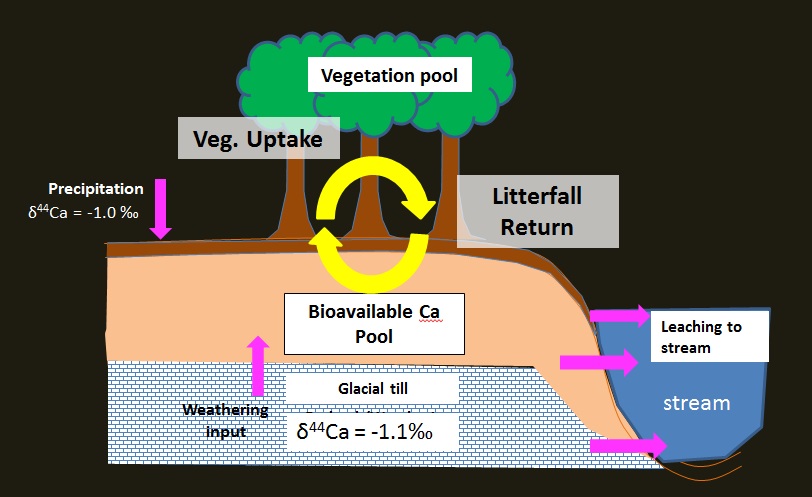Using stable Ca Isotopes to investigate the effect of biomass harvesting on Ca cycling in a New England Forest
A motivating question for this project is how the cycling of calcium between
vegetation, soil and waters responds to ecosystem disturbance, particularly
harvesting of biomass. To address this, we've developed stable isotopes of
calcium (44Ca/40Ca) as a tracer of Ca in streamwater.
Plants discriminate slightly against the heavy isotope of calcium during root
uptake, producing isotopically distinct Ca pools. We can then use these
isotopically distinct Ca pools to determine where streamwater Ca originated.
Measurement of natural variations in calcium isotope ratios is analytically
challenging primarily because the total range in 44Ca/40Ca
is small relative to other stable isotope systems. We've developed procedures in
the BU TIMS Facility, based on the established double-spike method, that allow
us to confidently determine small variations in natural abundance ratios of
calcium isotopes. This project is being carried out under the supervision of my
advisor Dr. Andrew Kurtz.
Publications and Presentations
1. Kurtz, A., Takagi, K., 2012. Ca isotopic fractionation patterns in forest ecosystems. 2012 AGU Fall Meeting. (Presentation)
2. Takagi, K., A. Kurtz, S. Bailey, 2011. Ca isotopes as a new geochemical tool to investigate response and recovery of a New England watershed to
whole-tree harvesting. 2011 AGU Fall Meeting. (Poster)
3. Takagi, K., A. Kurtz, S. Bailey, 2011. Using Ca isotopes to constrain sources of streamwater Ca following clear-cutting of a New England watershed.
2011 Gordon Research Conference: Catchment Science: Interactions of Hydrology, Biology & Geochemistry. (Poster)
